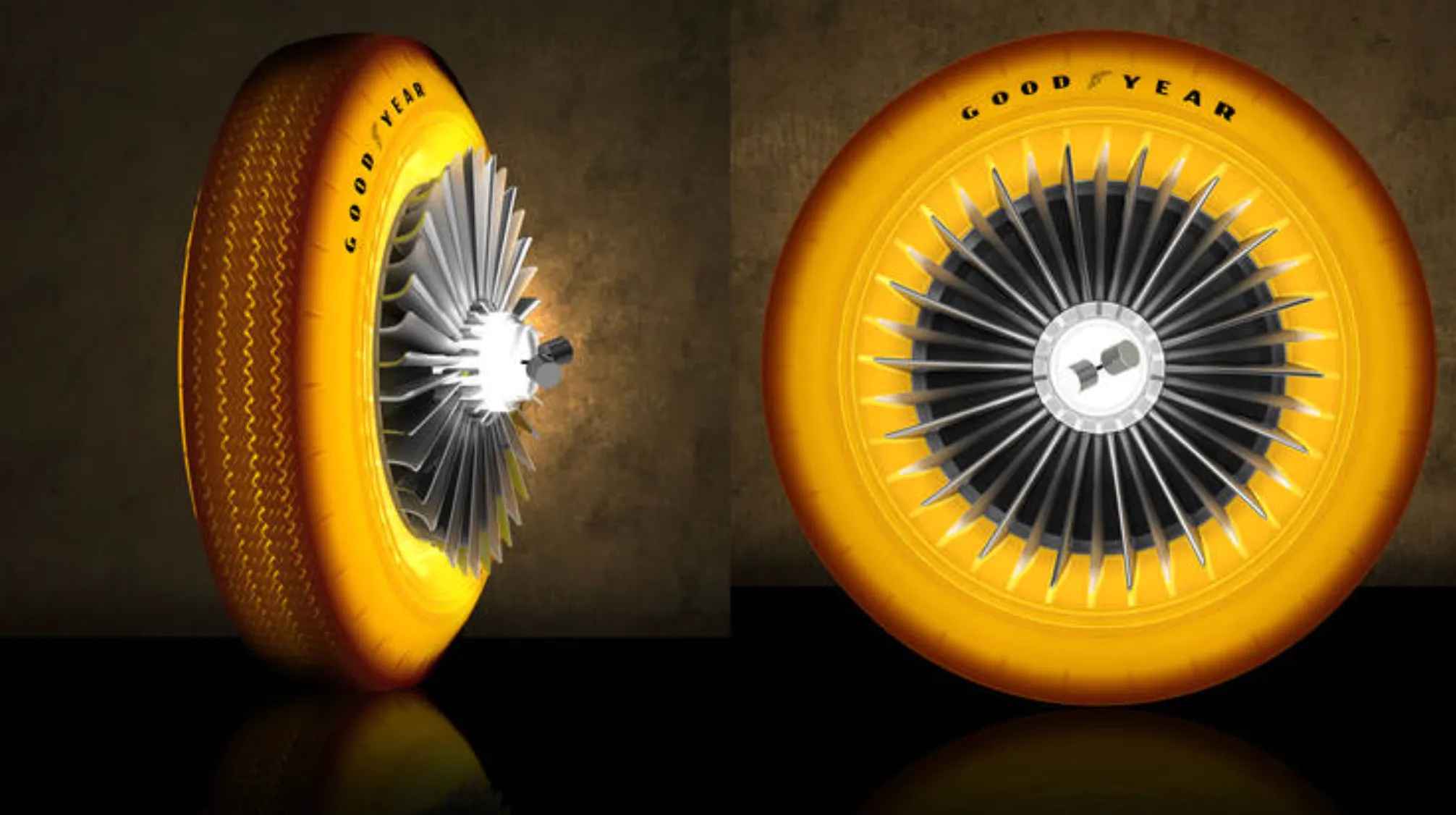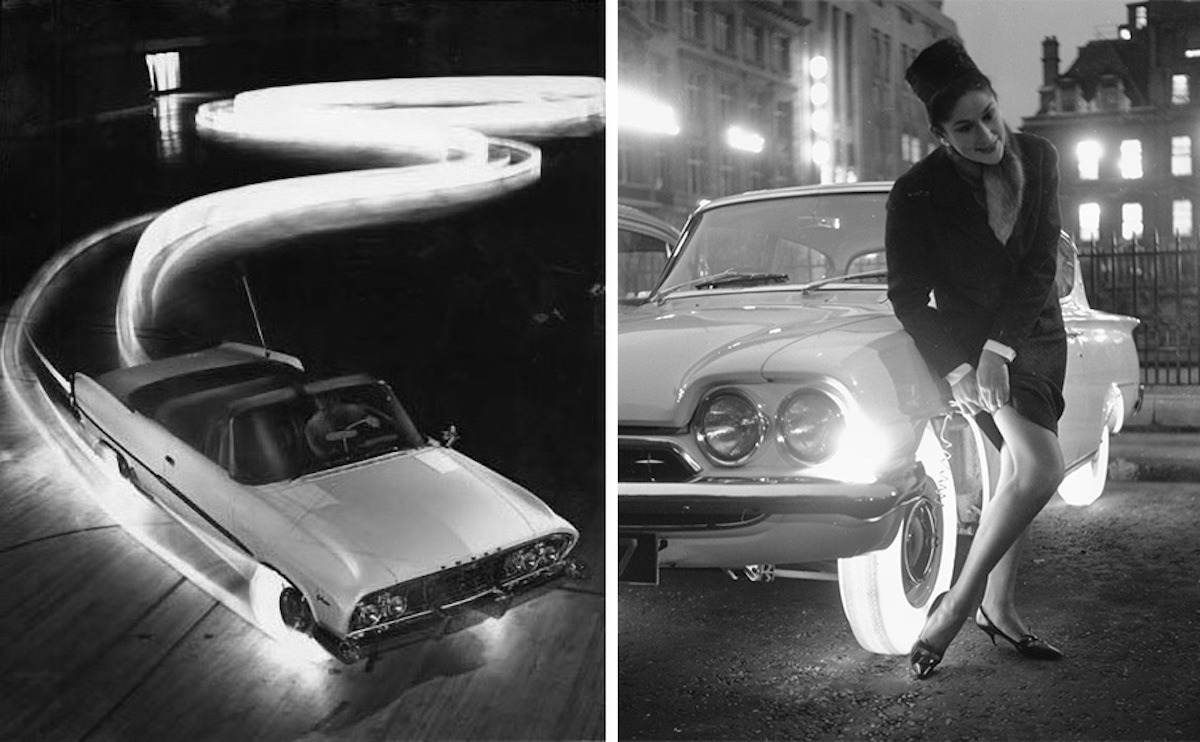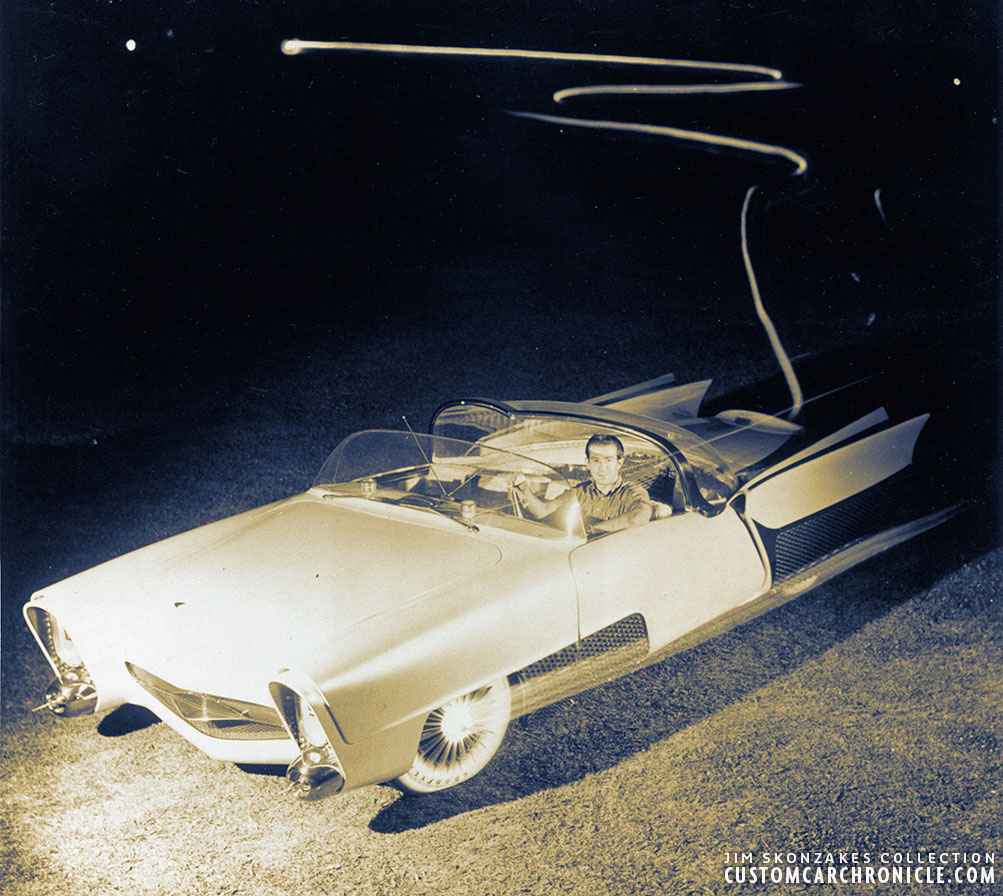Goodyear’s Glowing Tires: A Bright Spot In Automotive History
The 1950s and ’60s were transformative decades that influenced various facets of Western culture: from fast food to rock music, and notably, cars.
Americans embraced automobiles as expressions of their identities, often customizing them for enhanced flair and desirability. Naturally, when Ohio-based Goodyear Tire & Rubber Co. began experimenting with “the tire of tomorrow,” it captured global attention.
In the realm of automotive innovation, some ideas shine brighter than others, quite literally in the case of Goodyear’s glowing tires. Unveiled in the 1960s, these tires represented a pioneering leap forward, envisioning a future where vehicles could be both safer and visually striking.
Come along as we explore the fascinating story of Goodyear’s glowing tires.
The golden invention by Goodyear

Goodyear, a titan in the tire manufacturing industry, has a rich history of innovation. Established in 1898, the company has consistently been at the forefront of tire technology, from introducing the first tubeless tires to developing advanced materials for modern vehicles.
When you think of tire innovation, you might picture new tread patterns, better rubber, or run-flat technology. But Goodyear unveiled what they called “one of the most dramatic tire developments in the history of the industry.”

Goodyear introduced a tire made from Neothane, a synthetic polyurethane rubber. Unlike traditional tires, which needed multiple layers of rubber and fabric, Neothane tires could be poured into molds and baked in a 250 °F (121 °C) oven.
Goodyear claimed this new material combined the hardness of plastic with the flexibility of rubber and “outstanding resistance to abrasive wear, chipping, cutting, and tearing.”

A unique feature of Neothane was its translucency, allowing light to pass through. Making use of this, Goodyear added dye to create bright colors like green, yellow, red, orange, and blue.
Then, they integrated 18 small light bulbs, essentially dash lights, inside the tires, giving them a glowing effect.
The outcome was a vividly colored tire adding a unique touch of personal style.
“Goodyear’s translucent tire can be produced in any color to match the car…or perhaps the wife’s new outfit,” remarked Goodyear’s development manager John J. Hartz in 1962. “Someday a wife may tell a husband: ‘Charlie, go out and change the tires. I’m wearing my blue dress tonight.’”

In a 1961 press release, Goodyear envisioned a fashion-forward future for cars:
“Once the tires reach the market—and that could happen in a few years—auto stylists may use them to carry out a car’s color scheme, perhaps matching the tires with the upholstery. And it’s not at all unlikely that milady will want tires that enhance her wardrobe, her hair, or even her eyes.
Imagine, if you will, one girl telling another: ‘But, my dear, green tires just don’t do a thing for your complexion.’
When that day comes, it will mean a whole new frontier for the tire designer.”

Practically, the driver could control the tire lights individually or in pairs from a panel near the steering wheel. For instance, one tire could flash while the other remained brightly lit. This allowed the tires to serve as turn signals or brake lights.
The primary purpose of Goodyear’s glowing tires was twofold: to improve safety and add a futuristic touch to vehicles. The enhanced visibility offered by these illuminated tires was seen as a potential lifesaver, especially in bad weather or on dark roads.
Additionally, the glowing tires were designed to captivate, presenting a future where cars were not just transportation but also art.
Why illuminated tires never being mass-produced

So, what happened to these innovative tires? Despite their initial appeal, the tires weren’t practical. Road driving would quickly cover them in soot, diminishing their illumination.
Additionally, the material and design, though visually stunning, did not offer the same level of grip and durability as conventional rubber tires. This made them less reliable and safe, particularly in rain or on wet roads.
Goodyear’s engineers tried to solve these problems; however, the tires still lost traction at speeds over 100 km/h, performed poorly in wet weather, and overheated quickly.

Even if they had succeeded, the high cost would have made them unaffordable and impractical for mass production and general consumer use. Representatives from the company stated that the price of an illuminated tire would be almost double that of a premium summer tire.
And yet, there was also concern about the illuminated tires distracting other drivers. The glowing effect, while captivating, could divert attention from the road, increasing the risk of accidents.

Life magazine reported, “Motorists have been so enthralled by the pretty colors that they have gone through red lights or just stopped to stare.”
Despite ten years of development, Goodyear eventually abandoned the project. They quietly ended the experiment, and husbands never got the chance to change the tires to match their wives’ outfits.
The lasting impression of Goodyear’s unsold glowing tires

Goodyear made a splash with its glowing tires by showcasing them in public. They adorned a Dodge Polara in Miami and a Chrysler Silver 300 in Manhattan, turning heads wherever they went. The spectacle captured the imagination of onlookers during the vibrant ’60s era.
Despite the buzz, these tires never hit the market. Instead, Goodyear granted a set to Jim “Street” Skonzakes, a renowned custom car builder.
Skonzakes proudly featured them on his $75,000 creation, the futuristic Golden Sahara II, which became an instant hit with the public and even appeared in the 1960s film “Cinderfella.“

The Golden Sahara II itself was a masterpiece, and Goodyear’s glowing tires perfectly matched its futuristic design.
This car could be controlled remotely and had four steering options, including an aviation-style system. It featured a built-in TV, tape deck, electronic doors, a massaging seat, an automated trunk, and glowing tires.
Inside, it had 24-carat gold accents and white mink carpeting, exuding luxury. The illuminated Goodyear tires, called “glass” by Skonzakes, were the cherry on the sundae.

Over time, the Golden Sahara II fell into disrepair, but it found new life when Klairmont Kollections acquired it at auction for $350,000.
The car underwent a meticulous restoration by Speakeasy Customs, with Goodyear supplying four brand-new translucent tires for the project.
Photos from the restoration process showcased the illuminated tires and the car’s stunning transformation. Despite never being mass-produced, the glowing tires left a lasting impression, especially on the iconic Golden Sahara II.


